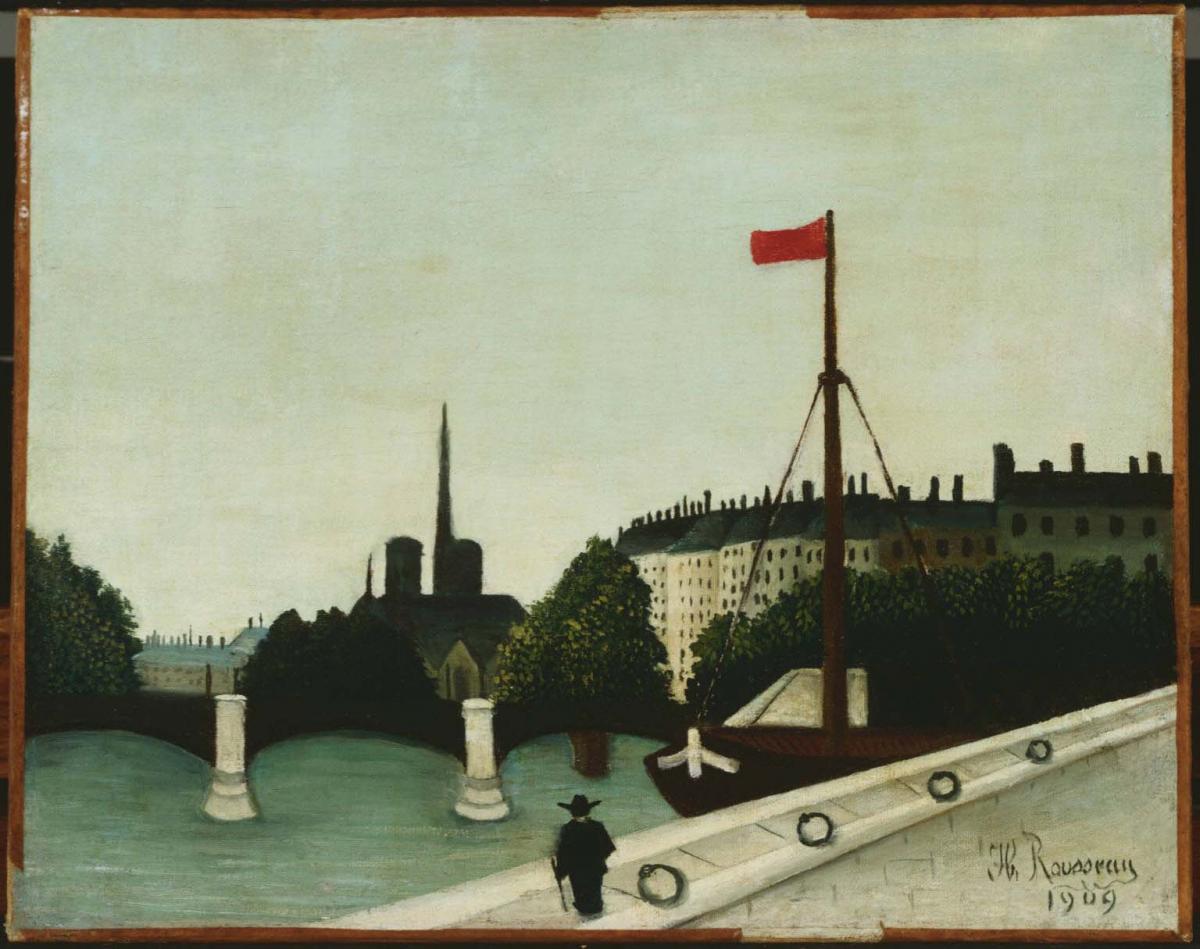Notre Dame
Henri Rousseau ( 1909 )

With Notre Dame Henri Rousseau seems to have commemorated his view of himself as an artist, as well as his nationality and love for Paris. By including a solitary and black-clad figure with walking stick, he may have created a miniature image of himself: “He inhabits his paintings the way we inghabit our dreams.” The painting coveys an atmosphere of quiet nostalgia: the spire of Sainte-Chapelle and the towers of Notre Dame, suffused in a soft, eerie light, seem to hold the rapt attention of the lonely figure. The simple composition and clear colors are typical refinements of Rousseau’s late oeuvre and recall the work of Corot, whom he admired.
Notre Dame may have been based on photographic images as well as a related sketch that Rousseau made, but he probably also relied on his memories of years wandering and working on the quays of Paris, filtering the scene through his own poetic vision and thus infusing the picture with a characteristically dreamlike, timeless atmosphere. An early advocate of Rousseau described the ambience as one of “vesperial melancholy in which the mast of the barge and the steeple of Notre Dame answer each other across the river.”